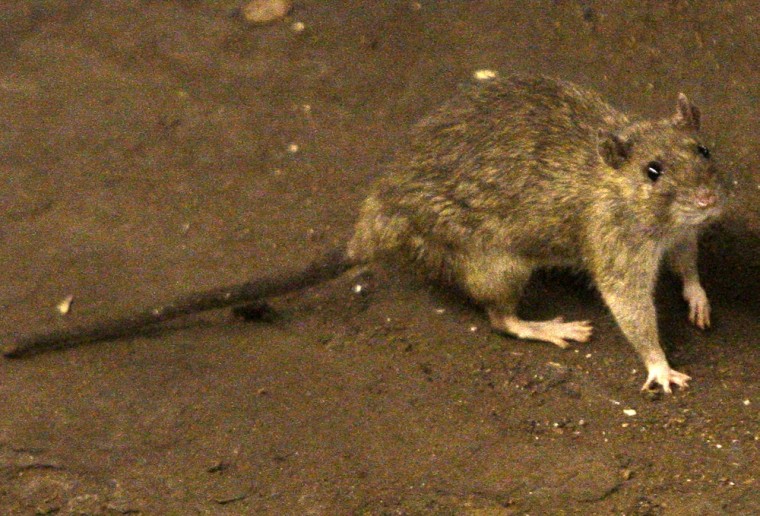New Yorkers may see an unwanted group of refugees in the wake of Hurricane Sandy — the rats that live in the city's subway tunnels.
As of Wednesday, four of the seven subway tunnels under the East River between Manhattan and Brooklyn were flooded due to superstorm Sandy, and many of the other subterranean lairs the seemingly invincible creatures inhabit were also inundated.
For now, there's no sign of a rat invasion. "We haven't seen an increase in rats above ground caused by Hurricane Sandy," Sam Miller, assistant commissioner for public affairs at the New York Department of Health and Mental Hygiene, told New York magazine.
But if the flooding persists, rodent survivors of the deluge may find their way onto the New York streets.
"Most of the rats that are living there will actually drown," said Herwig Leirs, a rodentologist at the University of Antwerp in Belgium.
While rats can swim or float for up to four days, they may get trapped without air in small pipes and crannies as they seek higher ground, Leirs told LiveScience.
The rushing water will also work against them.
"Rats will be carried away by the current and won't be strong enough to swim to the surface and breathe, or they'll be pushed to grates, they will get stuck there and they won't be strong enough to swim against the current," he said. [Photos of Sandy's Aftermath]
Baby rats will perish unless their mothers can carry them to safety, Robert M. Corrigan, a rodentologist who works with the city of New York on its pest problem, wrote in an email. Even those who survive the flooding will be doomed unless they can find a safe shelter with lots of food, he said.
Fewer rats, more visible
If the water is pumped out quickly, many rats will remain underground. The floodwaters likely brought a bonanza of garbage for vermin to feast on in the underground tunnels, Leirs said.
But if water lingers underground for several days, subway rats may pop up above ground, Leirs said. And the deserted, debris-strewn streets of New York will provide ample food and shelter for the lucky few that survived, he added.
"At least for the first few days, you will expect that rats will be a bit more bold," Leirs said.
Rodents hit a similar trashy jackpot in New Orleans after Hurricane Katrina swept through in 2005, bringing plenty of garbage and shelter in empty buildings, according to news reports. Hurricane Isaac, however, washed ashore tens of thousands of dead "swamp rats," whose rotting corpses presented quite a health hazard in Mississippi. [Gallery: Swamp Rats Die en Masse After Isaac]
Disease risk
Some 28 million rats have been reported to lurk in the dark, wet subway tunnels of New York City, though official numbers are hard to come by. Whether these rats, post-flooding, pose a human health risk will depend on how quickly water above ground evaporates and how quickly subway crews can clean out the tunnels.
Rats can carry leptospirosis, a bacterial infection that causes fever, nausea and occasionally meningitis. If rats urinate in stagnant pools of water, people with open wounds who come in contact with the water could become infected, Leirs said.
Leirs said repair crews may encounter a grisly sight when re-entering the tunnels: tons of dead rats. But with the city's debris swept underground, that may be the least of their concerns.
"I am sure they will find much more gruesome things than some dead rats," Leirs said.
This report was updated by NBC News. Follow LiveScience on Twitter . We're also on and .
